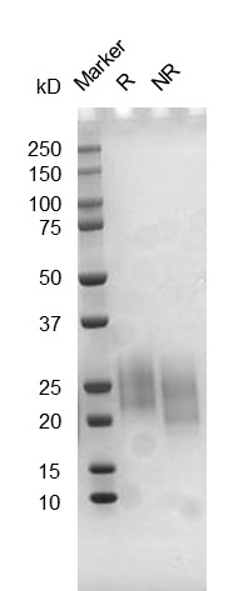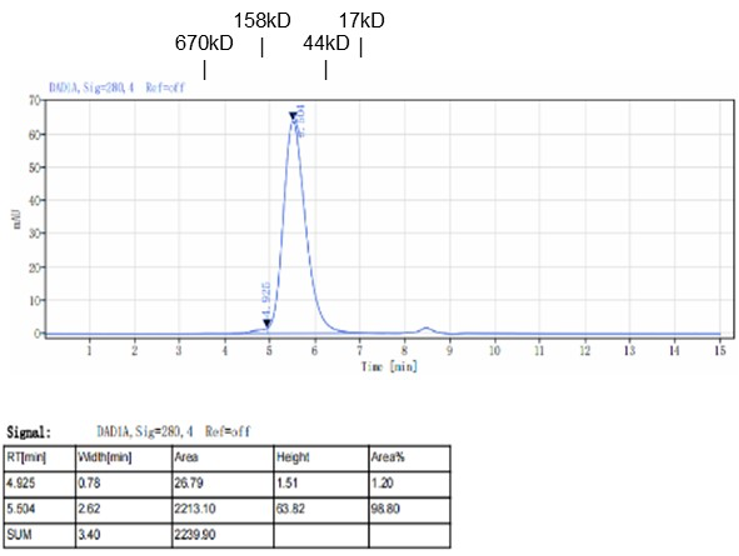hSCF(26-189)-His
Description
Stem cell factor (SCF) is the ligand for the receptor-type protein-tyrosine kinase KIT. It plays a pivotal role in regulating cell survival and proliferation, hematopoiesis, stem cell maintenance, gametogenesis, mast cell development, migration and function, as well as melanogenesis. SCF binding can trigger activation of several signaling pathways, including PIK3R1 phosphorylation and subsequent AKT1 activation. It transmits signals via GRB2 and activates RAS, RAF1 and MAP kinases MAPK1/ERK2 and/or MAPK3/ERK1. SCF and KIT promote activation of STAT family members STAT1, STAT3 and STAT5, alongside PLCG1, resulting in production of the cellular signaling molecules diacylglycerol and inositol 1,4,5-trisphosphate. Additionally, it acts synergistically with other cytokines, probably interleukins. SCF facilitates cardiac function recovery following myocardial infarction by increasing cardiomyocytes and vascular channels. It is a versatile factor in the differentiation of many specific cell types, such as spermatogonial stem cells and megakaryocyte progenitors. Apart from differentiation, SCF can also maintain cellular stemness. This is the case for human bone marrow mesenchymal cells, which rely on SCF and hepatocyte growth factor for maintenance. Similarly, hematopoietic stem cells require SCF from surrounding cells in their niche to maintain their stemness and progenitors. SCF has also improved protocols for continuous generation of cells in culture systems, like granulocytes and macrophages. For graft versus host disease treatment, SCF is used in combination with other cytokines to generate myeloid-derived suppressor cells from human umbilical cord blood. It is also used to generate T cells for cell-based therapies, drug screening and disease modeling. In regenerative studies, SCF is applied in wound healing hydrogel as a means of increasing its adhesion strength and tissue regeneration.
Product name | hSCF(26-189)-His |
Species | Homo sapiens |
Expression system | HEK293 |
Buffer | PBS, pH 7.4 |
Delivery condition | Dry ice (-80°C) |
Delivery Time | 1 week if in stock; 4 weeks if production needed |
Storage condition | Store at -80°C |
Brand | BioMetas |
Applications | Cell Culture, Immune System, Stem Cells & Differentiation, Transplantation Research, Wound Healing |
Aliases/Synonyms | Kit ligand, c-Kit ligand, KITLG, Kitl, KL, KL-1, mast cell growth factor, MGF, MGFSHEP7, SHEP7, steel factor, SLF, DCUA, DFNA69, DKFZp686F2250, familial progressive hyperpigmentation 2, FPH2, FPHH |
Reference | |
Note | For research use only. Not suitable for clinical or therapeutic use. |
Size | 1mg, 5mg, 10mg, 50mg, 100mg |
Brand | BioMetas |
Product type | Cytokine |
Expression system | HEK293 |
Applications | Cell Culture, Immune System, Stem Cells & Differentiation, Transplantation Research, Wound Healing |
Contact Us for a Quote!
Data Gallery
Fig. 1.) 4-20% SDS-PAGE analysis
Recombinant protein was visualized by Coomassie Brilliant Blue R250 staining.

Fig. 2.) SEC-HPLC analysis
Column: Superdex 200 Increase 5/150 GL
Running buffer: 2xPBS, pH 7.4
